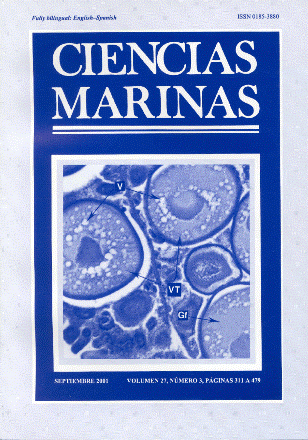Inventory and conservation of breeding waterbirds at Ojo de Liebre and Guerrero Negro lagoons, Baja California Sur Mexico
Main Article Content
Abstract
Surveys made in 1997/98 at the lagoons of Ojo de Liebre (Scammon´ s Lagoon) and Guerrero Negro, Baja California Sur, Mexico, showed that changes have occurred since 1926 in the species composition of the community of breeding waterbirds, in the arrangement of their nesting substrate and in their population size. Of 17 species breeding in the area in 1926, we found 12 nesting there during our survey. Additional data from other researchers allowed us to conclude that 16 species have nested in the area after 1984. Only one species (Sterna elegans) has not been reported nesting; however, it is still considered to be a local breeder. Three species (Egretta alba, Larus atricilla and Falco peregrinus) became new established breeders. Most of the species that breed on the islands within Scammon´ s Lagoon have a stable population or have increased in number. None of the egret species breeding in 1926 in marshes outside the islands currently nest there. Four species (Sterna antillarum, Charadrius wilsonia, Charadrius alexandrinus and Rallus longirostris) breed on the islands or at other sites in the lagoons and vicinity. Despite development in the region, the natural wetlands and open-water coverage remain almost unchanged. Natural nesting substrates are mostly confined to the islands and are vulnerable to land predators, wave erosion and direct human disturbance. These factors may have caused the shifting of nesting spots from one island to another and to other suitable nesting sites on the lagoons, the urban landscape, the saltworks and man-made structures. Breeding waterbirds have been granted limited protection through reserves and single-species conservation programs. We suggest guidelines to enhance their protection as a community in the context of El Vizcaíno Biosphere Reserve.
Downloads
Article Details
This is an open access article distributed under a Creative Commons Attribution 4.0 License, which allows you to share and adapt the work, as long as you give appropriate credit to the original author(s) and the source, provide a link to the Creative Commons license, and indicate if changes were made. Figures, tables and other elements in the article are included in the article’s CC BY 4.0 license, unless otherwise indicated. The journal title is protected by copyrights and not subject to this license. Full license deed can be viewed here.

